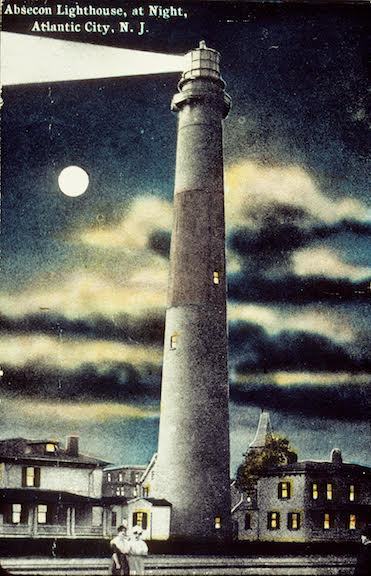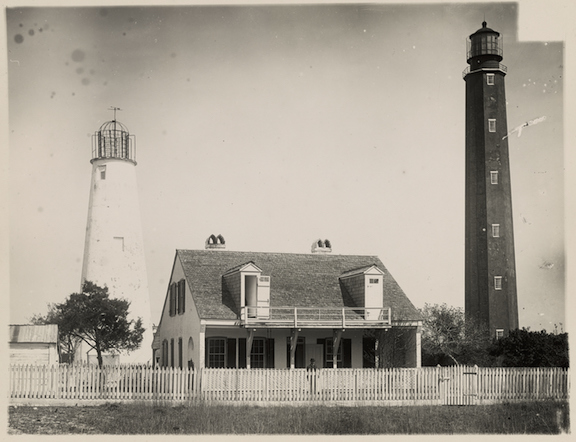Kate Walker here, keeping the light on Robbins Reef.
In an earlier post I talked about single-keeper, “family” light stations which marked sounds, bays, rivers, and harbors. Tall towers, above 150 in height, were the extreme opposite. They stood on flat land on the Atlantic and Gulf Coasts where offshore shoals, dangerous currents, or rocky ledges required the light to be seen 14 to 16 nautical miles. They were lit by huge first-order Fresnel lenses. Tall towers stood alone, separate from the keepers’ dwelling. Some tall towers had two assistant keepers, some three to maintain the watch schedule.

As a woman I never would have been appointed to serve as principal keeper of a tall tower.
The light in a tall tower was watched throughout the night to be sure the lamp kept burning properly. A watchroom built below the lantern permitted the keeper to stay there during his watch rather than repeatedly climbing stairs during the night.
These are the nation’s tall towers ranging from 192 to 150 feet in height:
- Cape Hatteras Light, North Carolina, erected 1870
- Cape Charles Light, Cape Charles, Virginia, erected 1864 and 1894
- Ponce de Leon Inlet Light, Florida, erected 1887
- Barnegat Light, New Jersey, erected 1859
- Cape Lookout Light, North Carolina, erected 1859
- Absecon Light, New Jersey, erected 1857
- Fire Island Light, New York, erected 1858
- St. Augustine Light, Florida, erected 1874
- Cape Henry Light, Virginia, erected 1881
- Navassa Island Light, Navassa Island (an uninhabited Caribbean island located in the Jamaica Channel), erected 1917
- Morris Island Light, South Carolina, erected 1876
- Currituck Beach Light, North Carolina, erected 1875
- Bodie Island Light, North Carolina, erected 1872
- Cape May Light, New Jersey, erected 1859
- Dry Tortugas Light, Florida, erected 1858
- Tybee Island Lighthouse, Georgia, erected 1867
- Cape Canaveral Light, Florida, erected 1868
- Pensacola Light, Florida, erected 1859
- Cape Romain Lighthouse, South Carolina, erected 1858

Sandy Hook, where John was assistant keeper, was 103 feet tall—a secondary coastal light with a third-order Fresnel lens, visible 10.8 nautical miles. I would like to have visited one of the tall towers and climbed its stairway to the top to see the huge first-order lens. Imagine the view!
 Information is from Clifford, Nineteenth Century Lights; <lighthousefriends.com>; and the 1883 Light List.
Information is from Clifford, Nineteenth Century Lights; <lighthousefriends.com>; and the 1883 Light List.
Submitted November 23, 2017
* * * * *
U.S. Lighthouse Society News is produced by the U.S. Lighthouse Society to support lighthouse preservation, history, education and research. Please join the U.S. Lighthouse Society if you are not already a member. If you have items of interest to the lighthouse community and its supporters, please email them to candace@uslhs.org.

